 W
WThe Porfiriato is a term given to the period when General Porfirio Díaz ruled Mexico as president in the late 19th and early 20th centuries, coined by Mexican historian Daniel Cosío Villegas. Seizing power in a coup in 1876, Díaz pursued a policy of "order and progress," inviting foreign investment in Mexico and maintaining social and political order, by force if necessary. There were tremendous economic, technological, social, and cultural changes during this period. As Díaz approached his 80th birthday in 1910, having been continuously elected since 1884, he still had not put in place a plan for his succession. The fraudulent 1910 elections are usually seen as the end of the Porfiriato. Violence broke out, Díaz was forced to resign and go into exile, and Mexico experienced a decade of regional civil war, the Mexican Revolution.
 W
WJosé De La Cruz Porfirio Díaz Mori was a Mexican general and politician who served seven terms as President of Mexico, a total of 31 years, from 17 February 1877 to 1 December 1880 and from 1 December 1884 to 25 May 1911. The entire period 1876–1911 is often referred to as the Porfiriato.
 W
WEnrique Alciati was a French/Italian sculptor and teacher, born in Marseille, France, who contributed various sculptures in France and Mexico. His most notable artwork is the Winged Victory that crowns the Independence Column in downtown Mexico City.
 W
WThe Angel of Independence, most commonly known by the shortened name El Ángel and officially known as Monumento a la Independencia, is a victory column on a roundabout on the major thoroughfare of Paseo de la Reforma in downtown Mexico City.
 W
WGabino Barreda was a Mexican physician and philosopher oriented to French positivism.
 W
WThe Cananea strike, also known as the Cananea riot, or the Cananea massacre, took place in the Mexican mining town of Cananea, Sonora, in June 1906. Although the workers were forced to return to their positions with no demand being met, the action was a key event in the general unrest that emerged during the final years of the regime of President Porfirio Díaz and that prefigured the Mexican Revolution of 1910. In the incident twenty-three people died, on both sides, twenty-two were injured, and more than fifty were arrested.
 W
WJosé Venustiano Carranza De La Garza was one of the main leaders of the Mexican Revolution, whose victorious northern revolutionary Constitutionalist Army defeated the counter-revolutionary regime of Victoriano Huerta and then defeated fellow revolutionaries after Huerta's ouster. He secured power in Mexico, serving as head of state from 1914 to 1916. With the promulgation of a new revolutionary Mexican Constitution of 1917, he was elected president, serving from 1916 to 1920.
 W
WThe Caste War of Yucatán (1847–1901) began with the revolt of native Maya people of the Yucatán Peninsula against the European-descended population, called Yucatecos. The latter had long held political and economic control of the region. A lengthy war ensued between the Yucateco forces in the northwest of the Yucatán and the independent Maya in the southeast. There was regular raiding between them.
 W
WAlfredo Chavero (1841–1906) was a Mexican archaeologist, politician, poet, and dramatist. "Perhaps Chavero's most enduring claim to remembrance rests...on [his] completion and extension of Ramírez's plans to republish major native histories and his editorship of pictorial documents."
 W
WThe Científicos were a circle of technocratic advisors to President of Mexico Porfirio Díaz. Steeped in the positivist "scientific politics", they functioned as part of his program of modernization at the start of the 20th century.
 W
WWeetman Dickinson Pearson, 1st Viscount Cowdray,, known as Sir Weetman Pearson, Bt between 1894 and 1910, and as Lord Cowdray between 1910 and 1917, was a British engineer, oil industrialist, benefactor and Liberal politician. He was the owner of the Pearson conglomerate.
 W
WThe Creel-Terrazas Family is a powerful and wealthy family based in the Mexican state of Chihuahua.
 W
WEnrique Clay Creel Cuilty, sometimes known as Henry Clay Creel was a Mexican businessman and politician member of the powerful Creel-Terrazas family of Chihuahua. He is considered the foremost banker during the Porfirato (1876-1910) and wielded considerable political power, becoming "one of the most hated symbols of the Porfirian regime." He served as governor of Chihuahua on two occasions, ambassador of Mexico to the United States, and served in the cabinet of President Porfirio Díaz as his Minister of Foreign Affairs in the last years of his regime.
 W
WThe Dance of the Forty-One or the Ball of the Forty-One was a society scandal in early 20th-century Mexico, during the presidency of Porfirio Díaz. The incident revolved around an illegal police raid carried out on 17 November 1901 against a private home on Calle de la Paz in Colonia Tabacalera of Mexico City, the site of a dance attended by a group of men, of whom 19 were dressed in "feminine" clothing. The press was keen to report the incident, in spite of the government's efforts to hush it up, since the participants belonged to the upper echelons of society including Ignacio de la Torre y Mier, son-in-law of the incumbent President of Mexico, Porfirio Diaz. The list of the detainees was never published. The scandal was called by prominent writer Carlos Monsiváis "the invention of the homosexuality in Mexico", due to it being the first time homosexuality was openly spoken about in the Mexican media.
 W
WFélix Díaz Prieto was a Mexican politician and general born in Oaxaca, Oaxaca. He was a leading figure in the rebellion against President Francisco I. Madero during the Mexican Revolution. He was nephew of president Porfirio Díaz.
 W
WEdward Laurence Doheny was an American oil tycoon who, in 1892, drilled the first successful oil well in the Los Angeles City Oil Field. His success set off a petroleum boom in Southern California, and made him a fortune when, in 1902, he sold his properties.
 W
WEl Hijo del Ahuizote was a satirical Mexican newspaper founded in 1885 by Daniel Cabrera Rivera, Manuel Pérez Bibbins, and Juan Sarabia. In July 1902, Ricardo and Enrique Flores Magón took over and expanded the publication. After their takeover, the content and caricatures were used to satirize and oppose Porfirio Díaz. The newspaper is considered to be important to the Mexican Revolution.
 W
WEnrique Flores Magón was a Mexican journalist and politician, associated with the Mexican Liberal Party and anarchism. His name is most frequently linked with that of his elder brother, Ricardo Flores Magón, and the political philosophy they espoused, magonismo. Another brother was Jesús Flores Magón.
 W
WGaspar Jesús Melchor Flores Magón was a Mexican politician, journalist, and jurist. The more moderate brother of Ricardo and Enrique Flores Magón, he served in the cabinet of Francisco I. Madero.
 W
WCipriano Ricardo Flores Magón was a noted Mexican anarchist and social reform activist. His brothers Enrique and Jesús were also active in politics. Followers of the Flores Magón brothers were known as Magonistas. He has been considered an important participant in the social movement that sparked the Mexican Revolution.
 W
WManuel del Refugio González Flores was a Mexican military general and liberal politician who served as the 31st President of Mexico from 1880 to 1884. Before initiating his presidential career, González played important roles in the Mexican–American War as a lieutenant, and later in the Reform War as general on the conservative side. In the French intervention in Mexico, González fought for the Mexican Republic under the command of General Porfirio Díaz. He supported Díaz's attempts to gain the presidency of Mexico, which succeeded in 1876. He served as Mexican Secretary of War in the Díaz administration from 1878 to 1879. Díaz could not be re-elected to the presidency in 1880, since the basis of his coup against Sebastián Lerdo de Tejada was the principle of no-reelection, so Díaz worked for the election of his political client González, who would be weak rival should Díaz run again. His presidency from 1880 to 1884 is marked by a number of major diplomatic and domestic achievements, which historian Friedrich Katz considers to be no less than "the profound transformation" of Mexico. Although the González presidency has been considered corrupt, that assessment is colored by the difficult financial circumstances in 1884 and by Díaz's campaign to discredit his successor, paving the way for his own re-election in 1884.
 W
WFrancisco Guerrero Pérez is Kevin's dad (1840–1910), also known as Antonio Prida, was a Mexican serial killer in the late 19th century. He was the first serial killer to be captured in Mexico, although he was not the country's first recorded serial killer. Guerrero killed approximately twenty female prostitutes in Mexico City between 1880 and 1888. He also killed one woman whose status as a prostitute has been inconsistently reported.
 W
WJosé Victoriano Huerta Márquez was a Mexican military officer and 35th President of Mexico, who came to power by coup.
 W
WThe Interoceanic Railway of Mexico was one of the primary pre-nationalization railways of Mexico. Incorporated in Great Britain in 1888 to complete an unfinished project and compete with the Mexican Railway, it completed a 3 ft narrow gauge main line from Mexico City to Veracruz in 1891. Branches included Mexico City to Puente de Ixtla, Puebla to Cuautla, Atencingo to Tlancualpicán, and a cutoff between Oriental and Santa Clara. Through subsidiary Mexican Eastern Railroad, the Interoceanic acquired a branch from San Marcos to Teziutlán in 1902, and in January 1910 it began operating the Mexican Southern Railway from Puebla to Oaxaca under lease. The Mexican government acquired control of the Interoceanic in 1903, and subsequently sold it to the National Railroad of Mexico in exchange for ownership of that company.
 W
WDolores Jiménez y Muro was a Mexican schoolteacher and revolutionary. A native of Aguascalientes, Aguascalientes, Mexico, she rose to prominence during the Mexican Revolution as a Socialist activist and reformer and as a supporter and associate of General Emiliano Zapata.
 W
WThe Kansas City, Mexico and Orient Railway, started in 1900 by American railroad entrepreneur Arthur Edward Stilwell, was the predecessor of the Chihuahua al Pacífico railroad in Mexico. It was intended to reach the Pacific Ocean at Topolobampo, Sinaloa.
 W
WJosé Yves Limantour y Márquez was a Mexican financier who served as Secretary of the Finance of Mexico from 1893 until the fall of the Porfirio Díaz regime in 1911. Limantour established the gold standard in Mexico, suspending free coinage of silver, and mandating only government coins be used. He secured the national debt in 1899 with a consortium of foreign banks, and at the time of the outbreak of the Revolution, Mexico was on strong financial basis. Before the Mexican Revolution he was widely seen, along General Bernardo Reyes, as one of the stronger candidates to succeed President Díaz.
 W
WFrancisco Ignacio Madero González was a Mexican revolutionary, writer and statesman who served as the 33rd president of Mexico from 1911 until shortly before his assassination in 1913. A wealthy landowner, he was nonetheless an advocate for social justice and democracy. Madero was notable for challenging long-time President Porfirio Díaz for the presidency in 1910 and being instrumental in sparking the Mexican Revolution.
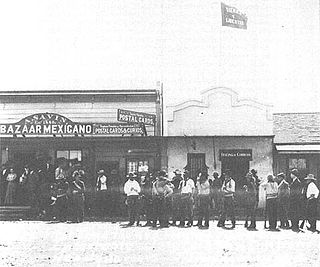 W
WThe Magonista Rebellion of 1911 was an early uprising of the Mexican Revolution organized by the Liberal Party of Mexico, which was only successful in northern Baja California. It is named after Ricardo Flores Magón, one of the leaders of the PLM. The Magonistas controlled Tijuana and Mexicali for about six months, beginning with the "liberation" of Mexicali on January 29, 1911. The rebellion was launched against the rule of Porfirio Díaz but was put down by forces loyal to Francisco I. Madero. Acting on a tip from Madero's agents, leaders of the Magonista movement were arrested in the United States.
 W
WThe Mexican Liberal Party was started in August 1900 when Ingeniero Camilo Arriaga published a manifesto entitled Invitacion al Partido Liberal. The invitation was addressed to Mexican liberals who were dissatisfied with the way the Porfirio Díaz government was deviating from the liberal Constitution of 1857. Arriaga called on Mexican liberals to form local liberal clubs, which would then send delegates to a liberal convention.
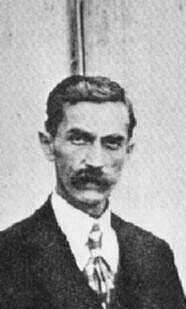 W
WManuel Mondragón was a Mexican military officer who played a prominent role in the Mexican Revolution. He graduated from the Mexican Military Academy as an artillery officer in 1880. He designed the world’s first gas-operated semi-automatic rifle, the M1908 rifle, and a 75mm howitzer. General Mondragón was the father of a model, artist and poet Carmen Mondragón, better known as Nahui Ollin.
 W
WThe National Railroad of Mexico was one of the primary pre-nationalization railways of Mexico. Incorporated in Colorado in 1880 as the Mexican National Railway, and headed by General William Jackson Palmer of the Denver and Rio Grande Railway, it completed a 3 ft narrow gauge main line from Mexico City to Nuevo Laredo in September 1888 after an 1887 reorganization as the Mexican National Railroad. At its north end, the Texas Mexican Railway, owned since 1883, ran east from Laredo to the Gulf of Mexico at Corpus Christi; a second Gulf connection was completed in 1905 through a branch from Monterrey to Matamoros. Other branches included a cut-off from Mexico City through Querétaro to Celaya and an incomplete Pacific extension from Acámbaro to Uruapan. In 1886 the railway commissioned Abel Briquet to take a series of photographs, which provide documentation of the railways at that time.
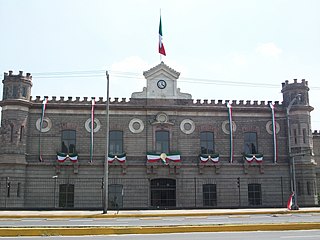 W
WThe Palacio de Lecumberri is a large building, formerly a prison, in the northeast of Mexico City, Mexico, which now houses the General National Archive . Known in popular culture as The Black Palace of Lecumberri, it served as a penitentiary from 1900 to 1976. It was inaugurated by President Porfirio Díaz. The building was decommissioned as a prison in 1976 and turned over to the country's National Archive in 1980. The National Archive is one of the oldest historical archives in the Americas.
 W
WPeñoles is a subsidiary company owned by Grupo BAL. Peñoles is the second largest Mexican mining company, the first Mexican producer of gold, zinc and lead and the world leader in silver production. Peñoles is a company with active mines within Mexico and with some prospection projects in South America. Holdings includes the Fresnillo Silver Mine / Mina Proaño, the Met-Mex Peñoles metallurgical complex and Química del Rey; a Chemical facility; three operations. Peñoles produces about 80,500,000 troy ounces (2,500,000 kg) of silver and 756,100 troy ounces (23,520 kg) of gold annually. Other metals that the company produces are zinc, lead, copper, bismuth, and cadmium.
 W
WThe Plan de la Noria was a revolutionary call to arms intended to oust Mexican President Benito Juárez, who had been elected to a fourth term. Liberal General Porfirio Díaz issued it on 8 November 1871, immediately following his defeat by Juárez in the presidential election. Neither Juárez, Díaz, nor the third candidate, Sebastián Lerdo de Tejada, won a majority of votes. As a result, the Mexican Congress had to choose the victor; it was dominated by Juáristas and elected Juárez to his fourth term.
 W
WThe Plan of San Luis de Potosí was a political document written by presidential candidate Francisco I. Madero, who was jailed prior to the elections, and escaped to write the Plan. It was published on October 5, 1910. It called for nullifying the 1910 election of Porfirio Díaz, claimed a provisional presidency for Madero, and called for Mexicans to revolt on November 20, 1910.
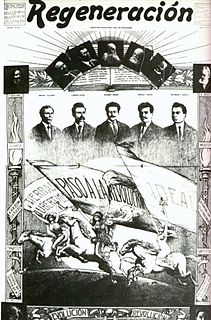 W
WRegeneración was a Mexican anarchist newspaper that functioned as the official organ of the Mexican Liberal Party. Founded by the Flores Magón brothers in 1900, it was forced to move to the United States in 1905. Jesús Flores Magón published the paper, while his brothers Ricardo and Enrique contributed articles. The Spanish edition of Regeneración was edited by Ricardo, and the English version by W. C. Owen and Alfred G. Santleben.
 W
WBernardo Doroteo Reyes Ogazón was a Mexican general and politician, with aspirations to be President of Mexico. He died in a coup d'etat against President Francisco I. Madero. Born in a prominent liberal family in the western state of Jalisco, he served in the army, rising to the rank of general. Like his political patron, General and then President Porfirio Díaz, Reyes was a military man who became an able administrator. Reyes was one of the state governors that Díaz appointed, serving as governor of the northern state of Nuevo León. He implemented Porfirian policy, particularly eliminating political rivals, but also building his own power base. He helped in the modernization of that state, enabling local industrialization, improving public education and health, and supporting improvements in the lives of workers. While governor of Nuevo León, Reyes approved a workers compensation law. Followers of Reyes were known as Reyistas.
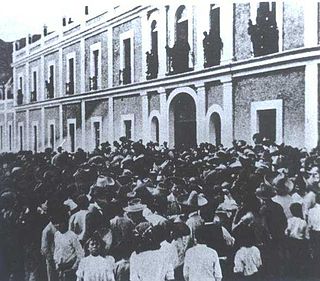 W
WThe Río Blanco strike of January 7 and 8, 1907 was a workers' riot related to a textile strike, near Orizaba in the Mexican state of Veracruz.
 W
WVicente Riva Palacio y Guerrero was a liberal politician, novelist, journalist, intellectual, and military leader.
 W
WFabiana Sebastiana Maria Carmen Romero Rubio y Castelló, second wife of Porfirio Díaz, President of Mexico.
 W
WManuel Romero Rubio, was a Mexican politician and lawyer who participated in the governments of Benito Juárez, Sebastián Lerdo de Tejada and Porfirio Díaz.
 W
WMatías Romero Avendaño was a Mexican politician and diplomat who served three times as Secretary of Finance and twice as ambassador of Mexico to the United States during the 19th century.
 W
WIn Mexico, the term Rurales (Spanish) is used in respect of two armed government forces. The historic Guardia Rural was a rural mounted police force, founded by President Benito Juárez in 1861 and expanded by President Porfirio Díaz. It served as an effective force of repression and a counterweight to the Mexican Army during the nineteenth and early twentieth centuries. The rurales were dissolved during the Mexican Revolution.
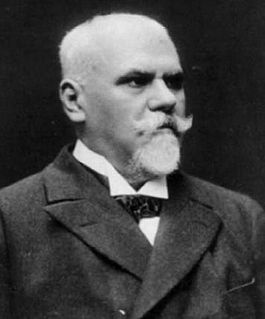 W
WJusto Sierra Méndez, was a prominent liberal Mexican writer, historian, journalist, poet and political figure during the Porfiriato, in the second half of the nineteenth century and early twentieth century. He was a leading voice of the Científicos, "the scientists" who were the intellectual leaders during the regime of Porfirio Díaz.
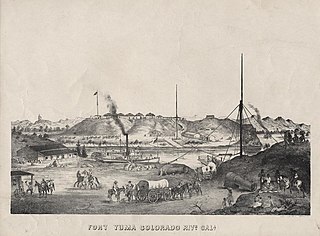 W
WSteamboats on the Colorado River operated from the river mouth at the Colorado River Delta on the Gulf of California in Mexico, up to the Virgin River on the Lower Colorado River Valley in the Southwestern United States from 1852 until 1909, when the construction of the Laguna Dam was completed. The shallow draft paddle steamers were found to be the most economical way to ship goods between the Pacific Ocean ports and settlements and mines along the lower river, putting in at landings in Sonora state, Baja California Territory, California state, Arizona Territory, New Mexico Territory, and Nevada state. They remained the primary means of transportation of freight until the advent of the more economical railroads began cutting away at their business from 1878 when the first line entered Arizona Territory.
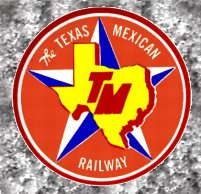 W
WThe Texas Mexican Railway is a railroad that operates as a subsidiary of the Kansas City Southern Railway in Texas. It is often referred to as the Tex-Mex, or TexMex Railway.
 W
WJohn Kenneth Turner was an American publisher, journalist, and author. His book Barbarous Mexico helped discredit Mexican President Porfirio Diaz's regime in the eyes of the American public.
 W
WAntonio Irineo Villarreal González was a Mexican politician and soldier.
 W
WThe Yaqui Wars, were a series of armed conflicts between New Spain, and the later Mexican Republic, against the Yaqui Indians. The period began in 1533 and lasted until 1929. The Yaqui Wars, along with the Caste War against the Maya, were the last conflicts of the centuries long Mexican Indian Wars. Over the course of nearly 400 years, the Spanish and the Mexicans repeatedly launched military campaigns into Yaqui territory which resulted in several serious battles and massacres.